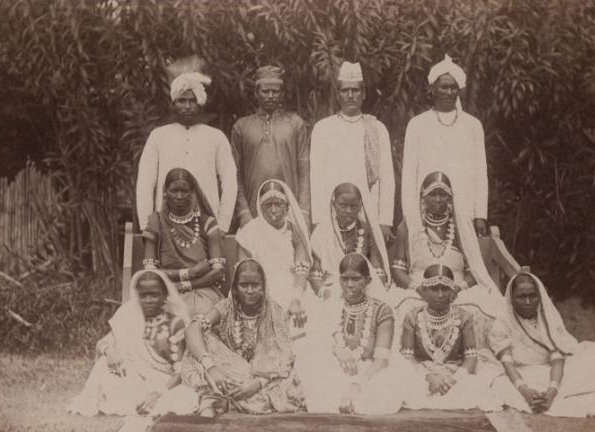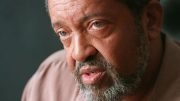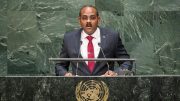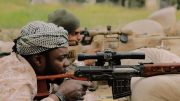Muslim Indentured Labourers in Trinidad and Guyana
The spoken word poem featured below is entitled “The Trauma of South Asian Indentureship During the Colonization of Trinidad and Guyana”, which was first featured in the book Woke & Loud a Faith-Based Medley of Muslim Poetry & Spoken Word 1, published in 2019 by Inked Resistance Publishing on pages 143 to 148. This article will serve as an updated, annotated version of my spoken word to provide context to its stanzas.
This spoken word is near and dear to my heart because it is based on my personal lived experiences, my intersectional social locations, inter-generational memories and based on my relationality to the many facets of my identity such as being Muslim, South Asian, Indian, Caribbean, Indo-Caribbean, Trinidadian, Guyanese, being the descendant of indentured labourers 2, having been born and raised in Montréal (Québec, Canada) and now residing in Toronto (Ontario, Canada). It speaks about the trauma and resistance my ancestors who were indentured labourers endured under British Colonization in Trinidad and Guyana (especially those who were Muslim) and the marginalization of the descendants of Muslim indentured labourers experience in South Asian, Indian, Indo-Caribbean and Caribbean spaces. Within these spaces the culture or history represented is usually Hindu-centric where the Indian diaspora or Indo-Caribbeans are equated with the Hindu Diaspora and Hinduism, leaving Islam invisibilized, underrepresented and Muslims who wish to claim these identities are unable to claim their South Asian-ness, Indian-ness, Indo-Caribbean-ness or Caribbean-ness (disclaimer: not all descendants of Muslim indentured labourers self-identify or claim those identities but it is important to note the marginalization experienced by those who do).
Spoken Word
The Trauma of Indentureship during Colonization in Trinidad and Guyana
Stolen, deceived
This is how the white colonizers achieved
South Asians they retrieved
Never to see their South Asia, they grieved
On ships across the kala pani these jahajis sailed
They only felt jailed
In so much pain they wailed
Just misery every time they exhaled
Not knowing what this journey entailed
The British availed
Our Women were unveiled and nailed
All rights and religious expressions were curtailed
But still we prevailed
Reaching Trinidad and Guyana’s shore
Emotions soar
Tear’s pour
Loss all you adore
No escape door
Nothing but gore
Lashes from a cane
Blood and pain
You lost your name
Only felt shame
Life’s not the same
Work in the field as an indentured labourer till you strain
Nothing to gain
Your body feels drain
Nothing left but to remain
Can’t fight, it’s hard to refrain
But what can you obtain
On this alien terrain
Slowly going insane
Out of all the indentured labourers from South Asia, Muslims represented a small percent 3,
To say only Hindus were on the first ships, the Whitby and Hesperus to Guyana and the Fatel Razack to Trinidad would be a misconception that misrepresents,
94 Muslims were on the first ships to Guyana 4. and Muslims were among the 213 passengers on the first ship to Trinidad 5 , in order to accurately represent,
But in the films Rohit Jagessar’s Guiana 1838 and Suresh Pillai’s Jahaji Bhai Muslims were inaccurately absent 6 ,
Failing to acknowledge the indisputable fact that Muslims were on the first ships perpetuates the trope of erasing and silencing how Muslim’s were present,
To equate indentured labourers or the Indian diaspora with solely Hindus or Hinduism is inaccurate and erases Christian and Muslim experiences, which is something to lament,
The first Muslims to reside in the Caribbean were those who came from Africa as slaves in order to convey Muslim history to the full extent 7 .
For many Muslims, there is nothing but the love they have for you,
Oh Mother India, my love and longing for you has only grown from now since 1872,
When the Howrah ship first set sail with my ancestor Baboo,
“Who would never see your beloved shores again, if we only knew,
We were ripped from your womb to live for generations without you,
Not knowing how we would make do,
It is as if with each generation we are born with a piece of our hearts missing and the missing piece is with our mother in India, we can never be whole without you,
Each day with pain we grew,
We were left to breathe the Caribbean air but our body and blood came from you,
Decades of oppression, abuse, indentured labor, colonialism, torture, and resistance we endured through,
So our children may know you,
And you can live on within us, we will never forget our mother, no matter what we do” 8,
Yet while we are longing to embrace you, our siblings from mainland South Asia and Hindus, they reject us, their acceptance we could never accrue,
The love we have for India is strong and should not be viewed as less because of our intersectional identities as the descendants of indentured labourers and being Muslim, not Hindu,
Their hierarchy of authenticity, we could never breakthrough, Mother India, we are all your children and despite this rejection, we still love you.
Under a mango tree in prayer for jummah 9 , in sujud 10 these indentured laborers bent,
Holding on dearly to every cent
Brick by brick a masjid 11 was built out of clay and then cement
Clutching to Qur’ans from South Asia, they remained unbent
To practice Islam they were intent,
Memories filled with agarbatti 12 and attar 13 scent
Holding Qur’an Sharifs 14 , singing qasidas 15 in Urdu, their time was spent,
Keeping roza (fasting) while toiling all day in the field and taraweeh 16 all night during Ramadan with no lament,
No sleep, going village to village finding Muslims and learning the sunnah so they can prevent,
The proselytization and erasure of their culture and history, they will not relent,
For resistance against colonization 17, facing threats of death, jail and lashes, the sacrifices they experienced was to this extent.
Children come with time
Yet that doesn’t stop colonial crime
The threats don’t sublime
But maybe it’s time to shine
And embark on the colonial resistance climb
October 30th, 1884, the Hosay Massacre was Trinidad’s bloodiest day,
The white colonizers wanted the South Asians to pay,
In commemoration for Hussain and Hassan the tassa drums play,
Taziyas were constructed on a beautiful display,
Black and Brown communities united to portray,
We will not continue to be colonized and obey,
The Indian Festivals Ordinance of 1882 where Hosay was prohibited to be celebrated in the roadway,
The truth of what happened that day is what I want to relay,
Eight to ten thousand defied the Ordinance and held their taziyas in procession, although it was risqué,
Captain Baker called on armed soldiers and police officers to wait till the crowd was 100 feet away,
To open fire with two volleys with short-range guns loaded with 20 rounds leaving over 120 injured and 22 were just slayed 18,
Screaming painful cries, pools of blood, injured bodies, to protect your life you just run away,
This is what happened that fateful day,
To stand up against the white British colonizers this is the consequence they pay.
In Guyana Muslims have a history of standing up to colonialism, which is consisting,
Of the Pathan, Mazar Khan who was a freedom fighter that fought in the Sepoy rebellion alongside other Indians against British colonization by assisting 19,
Then he was sent to the Caribbean and when Muslims left South Asia’s shores, love for their homeland is what they would cling,
As a form of uplifting,
The first to stand up to inhumane treatment on the estates were Jumun and Pultun who on October 11th, 1838 ran away as an act of resisting 20,
After running away their bodies were found in the bushes in Mahaica, since to the white colonizers they betrayed them by insisting,
They had rights when existing,
The most famous act of resisting,
Where Muslims kept on persisting,
To uphold the rights of indentured labourers on the estates and the mood was shifting,
Was when the Muslim “riot-leaders” Chotey Khan, Aladi, Amirbaksh, Moula Bux, Jahangir Khan and Dildar Khan thought this was worth risking 21,
Everything they had on March 13th, 1913 in the Rose Hall Riots, where they were wishing,
For change, of unjust treatment from being overworked and underpaid with no holidays by Moula Bux reading their rights in the Immigration Ordinance by vocalizing,
The white colonizers responded with the Rose Hall Massacre where the aim was just injuring,
Every coloured living thing,
George Castriot De Rinzy commanded the colonial police militia to fire at the indentured labourers armed with a revolver maxim gun, they were firing,
Armed with only sticks, cutlasses, assagais 22 , bottles, bricks and stones indentured labourers fought back with almost nothing,
Yet they had courage unwavering,
The colonial police militia shot 100 rounds as a bloody violent response with 41 injured and 15 dead, like it was nothing,
Moula Bux struck his chest and shouted “My heart is at Rose Hall and if I go from here, it will be my dead body”, he was willing to risk everything.
Freedom is all they dream
To move uncharted as a stream
Hope is what they scream
They hold independence in esteem
Thinking it won’t come to extremes
Black or Brown we’ll be on the same team
Divide and conquer is the white colonizers aim
To them it’s just a game
So Black- Brown sides put up their claim
Yet the indigenous peoples such as the Arawak, Carib, Akawaio, Arekuna, Macushi, Wapishanas, Patamuna, Waiwai, Warrau people are the rightful owners of the land in this domain,
With the 1964 Wismar Massacre Burnham placed the blame
Brown bodies inflame
Machetes hacked people leaving them maimed
But what can they proclaim
From Wismar to Linden, Burnham had the city re-named
Women were raped, but the perpetrators had no sense of shame
Guyana’s Independence Day May 26th, 1966 falls on the anniversary of the Wismar Massacre where those affected will not have a celebratory mind-frame,
Due to the painful history, if the goal was to unite the country that date cannot achieve that aim,
Since the moment that day was chosen for Independence to be exclaimed
Nothing will be the same
Because of this evil colonial pain
We as a community survived but we need to reclaim
We need to work towards decolonizing our mind-frames
So we can rid this legacy of colonialism in cultural tensions, stand in solidarity with each other, understand our power/ privilege so we can confront any form of oppression (Anti-Black Racism, Anti-Muslim sentiment, Anti-Indian discrimination, etc.) so we can reach the point where we can exclaim,
We overcame
It is easy to proclaim
But is hard to attain.
Author Bio:
Karimah Rahman is a spoken word artist passionate about writing spoken word poetry based on the themes of anti-oppression, anti-colonialism, social justice, and social activism. Her research and lived experiences are used as common themes in her spoken words. Her passion for writing, poetry began when she was in high school, her passion for spoken word emerged when she pursued her Masters in Political Science and Graduate Diploma in Asian Studies at York University in Toronto. Her Masters research specialized in the Muslim South Asian Diaspora in Trinidad and Guyana. Currently, Karimah is pursuing her PhD in Policy Studies at Ryerson University in Toronto. She is specializing in the Immigration, Settlement and Diaspora Policy Stream. Her research focuses on the marginalization of Indo-Caribbeans (especially Muslims) and those in the Old South Asian Diaspora (especially the descendants of indentured labourers) by Mainland South Asians from an intersectional perspective within a predominantly Canadian context. The policy her PhD dissertation specializes in is the 2001 South Asian Heritage Act, implemented as South Asian Heritage Month in Ontario. Although the Indo-Caribbean community can be attributed to grassroots mobilization/ lobbying for the Act as an inclusive celebration of South Asian culture, this very community (especially Indo-Caribbean Muslims) are the most invisibilized during South Asian Heritage Month celebrations. This inequality can be critically unpacked/ problematized with the South Asian/ Indian Authenticity Hierarchy Theory she coined as an intervention in South Asian identity literature to explain how Mainland South Asians marginalize, discriminate, oppress Indo-Caribbeans (including the Old South Asian Diaspora and Indentured Diaspora) due to intersectional discourses of purity, authenticity during South Asian identity construction based on power/ privilege.
Karimah’s first publication is a book chapter entitled “Indo-Caribbean Identity Formation: Challenges of South Asian Authenticity,” published by the University of Guyana Press in 2018, in the book entitled Dynamics of Caribbean Diaspora Engagement: People, Policy, Practice. The book chapter includes a spoken word entitled “I am not South Asian: Discrimination Against Indo-Caribbeans by Mainland South Asians.” This was her first published spoken word and focuses on the problematic South Asian/ Indian hierarchy of authenticity, where Indo-Caribbeans are placed at the bottom of this hierarchy, where they cannot claim South Asian/ Indian spaces. Her most recent publication is the book Woke & Loud a Faith-Based Medley of Muslim Poetry & Spoken Word published in 2019 by Inked Resistance Publishing which features along with the spoken word in this article, two other poems entitled “Dear Society- I am NOT a Costume: Cultural Appropriation” focusing on cultural appropriation (such as during Halloween) and “Growing up in Quebec as a Muslim: Confronting White Supremacy”, focusing on White Supremacy, the January 2017 Quebec Mosque Massacre, Bill 61, Bill 21 and the March 2019 ChristChurch Mosque Massacre.
Karimah identifies as a Muslim, South Asian, Indian, Caribbean, Indo-Caribbean, a descendant of indentured labourers, Trinidadian and Guyanese. She was born in Canada and grew up in Montreal, Quebec, before moving to Toronto for her Masters. Karimah is a co-founder of the South Asian Diaspora Collective (SADC), which was created to foster a community space so the South Asian Diaspora can connect, unapologetically express their authentic South Asian selves, feel validated and supported to speak and live their multiple intersectional truths. SADC aims to achieve equity within the South Asian community through healing as well as recognizing discrimination and marginalization by being self-reflective of problematic understandings of South Asian-ness so South Asians can grow to be more accepting and inclusive as a community (across the gamut from those who do to those who do not self-identify as South Asian in the diaspora). The first event held by SADC was in May 2019 for South Asian Heritage Month, where the Indo-Caribbean origins of the month was expressed alongside a panel that aimed to critically unpack the question “What is South Asian?” within a Canadian diasporic context based on complex intersectional identities and social locations, while simultaneously problematizing the term South Asian and its popularized narrow status quo definitions. SADC can be reached at the Instagram account @SouthAsianDiasporaCollective.
Karimah can be reached by email at karimah.rahman@ryerson.ca. Karimah can be followed on Instagram at @karimah_kr, her research can be followed on Research Gate at https://www.researchgate.net/profile/Karimah_Rahman2, on Academia.edu at https://ryerson.academia.edu/KarimahRahman and on her Ryerson student profile at https://www.ryerson.ca/graduate/policystudies/students/profiles/rahman-karimah/.
- More information on the book Woke & Loud a Faith-Based Medley of Muslim Poetry & Spoken Word published in 2019 by Inked Resistance Publishing is available at the link: https://www.inkedresistanceislamicpublishing.com/shop-mystore#!/WOKE-&-LOUD-A-Faith-Based-Medley-of-Muslim-Poetry-and-Spoken-Word/p/136820094/category=23409074 Karimah’s work and bio are featured on pages xiv 139-153 and 367. Many topics raised in this spoken word were also addressed in my conference presentation entitled “How does the Politicization of Cultural Memory Marginalize the South Asian/ Indian Muslim Diaspora in Trinidad and Guyana?” presented in June 2018 at the Legacy of Slavery and Indentured Labour: Linking the Past with the Future Conference on Slavery, Indentured Labour, Migration, Diaspora and Identity Formation at the Anton de Kom University in Paramaribo, Suriname.[↩]
- Just as a quick disclaimer, this spoken word is based on my lived experiences, intersectional social locations, personal connections/ identifications and is not meant to be representative of all Muslims, South Asians, Indians, Caribbeans, Indo-Caribbeans, Trinidadians or Guyanese. I acknowledge and respect that not everyone who happens to have these backgrounds would identify with these identities and histories in the way that I do. These various umbrella identities are not monolithic groups, they are each composed of various intersectional identities based on various cultures, ethnicities, nationalities, languages, gender identities, sexual identities, abilities, socio-economic status etc. and each individual will have their own relationality in how they identify with these spaces based on their social locations and personal lived experiences.[↩]
- Muslim indentured labourers from South Asia are popularly represented in the literature as ranging from 14-20% of all indentured labourers[↩]
- The first research to debunk the popular myth that Muslims were not among the first ships to Guyana was by Raymond S. Chickrie and Bibi H. Khanam in their article entitled “170th Anniversary of the Arrival of the First Hindustani Muslims from India to British Guiana” published in 2009 in the Journal of Muslim Minority Affairs 29(2) on page 201 and 206[↩]
- The first research to debunk the popular myth that Muslims were not among the first ships to Trinidad was by Brinsely Samaroo in the paper “Early African and East Indian Muslims in Trinidad and Tobago” presented at the Conference on Indo-Caribbean History and Culture at the University of Warwick in 1988 on page 9 and again by Farouk Khan in the paper “The Origin and Growth of Islam in Trinidad and Tobago” presented at the Workshop on African, Indian and Indigenous Religions of the Caribbean in 1996 on page 7[↩]
- The absence of Muslims indentured labourers in film was first observed by Raymond S. Chickrie and Bibi H. Khanam in their article entitled “170th Anniversary of the Arrival of the First Hindustani Muslims from India to British Guiana” published in 2009 in the Journal of Muslim Minority Affairs 29(2) on page 202. Until January 2019 with the release of Jahaji Family by Kamalo Deen (based on research from his brother Samshu Deen), there was no representation of Muslim indentured labourers in the Caribbean in film, therefore this film was the first film to explore the life of Muslim indentured labourers in the Caribbean.[↩]
- It is important to acknowledge that the first Muslims to the Caribbean were visiting sailors but the first Muslims to reside in the Caribbean were primarily from West Africa (mainly Fulani and Mandingo) and due to horrifically oppressive conditions on the slave plantations and proselytization, the history and culture of these Muslims were painfully and forcefully erased due to colonization[↩]
- This stanza was based on a “Letter from an Indo-Caribbean Canadian to Mother India (present-day South Asia)” featured in my book chapter entitled “Indo-Caribbean Identity Formation in Canada: Challenges of South Asian/ Indian Authenticity” in the book Dynamics of Caribbean Diaspora Engagement: People, Policy, Practice published in 2018 by the University of Guyana Press on page 278.[↩]
- Prayers done by Muslims on Friday[↩]
- A prostrating position of prayer done by Muslims[↩]
- Mosque, place of worship for Muslims[↩]
- Incense sticks that are lit for fragrance used popularly in South Asia[↩]
- Various perfume oils used popularly by Muslims[↩]
- A gathering where Muslims recite the Qur’an and qasidas are sung, also known as a Moulood function[↩]
- Religious songs of praise sung by Muslims – which continues to be popular in South Asia as well as the diasporas[↩]
- Extra nightly prayers during Ramadan[↩]
- I wanted to acknowledge the forms of resistance mentioned in this stanza by Muslim indentured labourers were first recorded by Zainol Khan in the book “Milestones in the History of Muslims in Trinidad and Tobago Since 1845” published by the Inter-Religious Organization of Trinidad and Tobago Inc. in 2013 on pages 9 and 32, by Aisha Khan in the book “Callaloo Nation: Metaphors of Race and Religious Identity among South Asians in Trinidad” published in 2004 by Duke University Press on page 133 and by Omar H. Kasule in the article “Muslims in Trinidad and Tobago” published in 2007 in the Journal of Muslim Minority Affairs 7:1 on page 199.[↩]
- The details of the 1884 Hosay Massacre have been discussed before me and it is important to acknowledge that this work has already been done. The numbers of those who participated, rounds fired, those injured and those who died slightly differ in common circulation in previous literature on the Hosay Massacre. I acknowledge there are many more resources available that mention these numbers but some articles that do are “The Hosay or Muharram Massacre of 1884 in Trinidad” article featured on the Caribbean Muslims website (https://www.caribbeanmuslims.com/the-hosay-or-muharram-massacre-of-1884-in-trinidad/) in paragraph 3, 11 and 15 in the “Remembering the 1834 Jahaji Massacre” article featured in the Trinidad Daily Express Newspaper (https://trinidadexpress.com/news/local/remembering-the-jahaji-massacre/article_c7769a29-752c-504f-95d4-65e983800034.html) in paragraph 4[↩]
- I just wanted to acknowledge that Muslim engagement in the Sepoy rebellion and those exhiled to Guyana such as Mazar Khan was first documented in Raymond S. Chickrie’s article entitled “The Afghan Muslims of Guyana and Suriname” published in 2002 by the Journal of Muslim Minority Affairs 22(2) on page 390.[↩]
- I just wanted to acknowledge that the Muslims Jumun and Pultun were first mentioned in the literature by Raymond S. Chickrie and Bibi H. Khanam in their article entitled “170th Anniversary of the Arrival of the First Hindustani Muslims from India to British Guiana” published in 2009 in the Journal of Muslim Minority Affairs 29(2) on page 208.[↩]
- I just wanted to acknowledge that the information within this stanza on the 1913 Rose Hall Massacre was first popularly documented in Basdeo Mangru’s book “Indenture and Abolition: Sacrifice and Survival on the Guyanese Sugar Plantations” published by TSAR Publications in 1993 on pages 83-91 with the acknowledgment of these riot leaders being Muslim absent from the narrative until Raymond S. Chickrie’s article entitled “The Afghan Muslims of Guyana and Suriname” published in 2002 by the Journal of Muslim Minority Affairs 22(2) on page 392 and in Raymond S. Chickrie and Bibi H. Khanam’s article entitled “170th Anniversary of the Arrival of the First Hindustani Muslims from India to British Guiana” published in 2009 in the Journal of Muslim Minority Affairs 29(2) on page 214, which provided explicit acknowledgment of the historical contributions of Muslims in leading the resistance against colonialism in the 1913 Rose Hall Massacre.[↩]
- ‘Spears fashioned from cutlasses attached to shovel stick described in Basdeo Mangru’s book “Indenture and Abolition: Sacrifice and Survival on the Guyanese Sugar Plantations” published by TSAR Publications in 1993 on pages 86-87 [↩]




